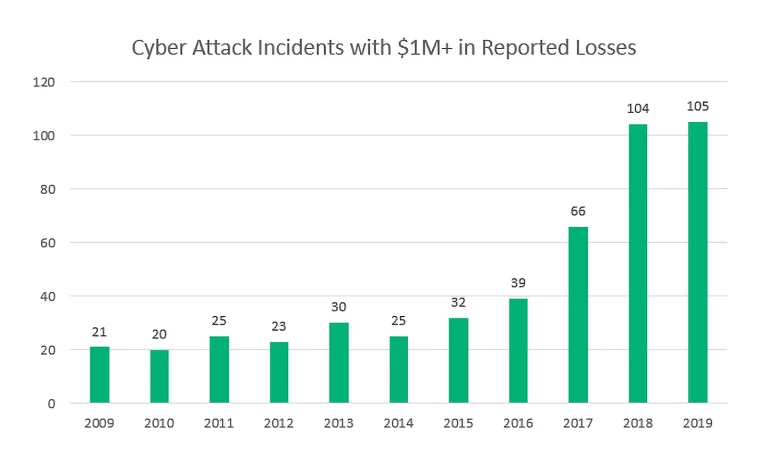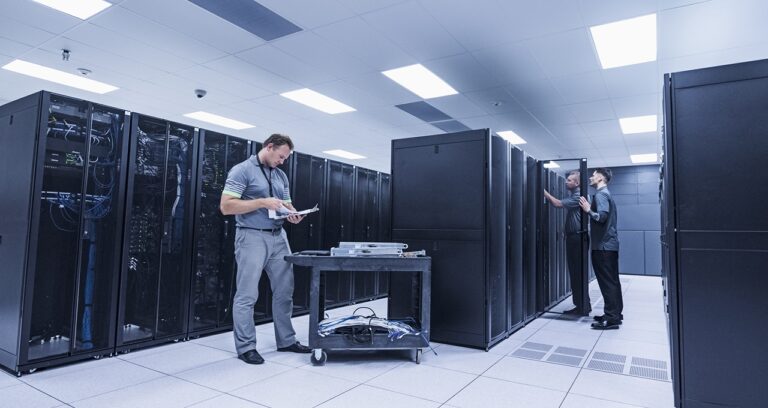These Are the Biggest Cloud Computing Security Risks You Might Be Missing
There’s a wide array of cloud computing security risks that organizations need to keep in mind and do their best to mitigate. Due to the large number of risks that exist, as well as the ever-evolving nature of security threats, it’s common for enterprises to miss some that should be a primary concern.
Here are the main ones that IT teams are susceptible to, and which they should prioritize.
Security System Misconfigurations
Many cloud security issues arise from security misconfigurations. Here are some of the reasons why these misconfigurations can occur in a cloud network’s security system.
First, one of the main advantages of cloud infrastructure is that it’s optimized for accessibility and data sharing. However, this also makes it difficult for a cybersecurity team to ensure that only authorized parties can access critical data. As a case in point, link-based data sharing means that anyone with a link can gain access to data.
Second, when you use a cloud service, you don’t have complete visibility into—or control of—your cloud infrastructure. Instead, you have to rely on the security arrangement of whatever cloud service you’ve opted to go with. This dependence on cloud service providers (CSPs) for security brings into focus the importance of choosing a reputable provider.
Third, many organizations use more than one CSP. As a result, they may experience difficulties in getting to grips with each CSP’s security controls. And if you fail to understand all applicable security controls, this can lead to misconfigurations and security oversights, creating vulnerabilities that threat actors will exploit.
Denial-of-Service (DoS) Attacks
DoS attacks can cause a machine or network to crash, making it inaccessible to users. Malicious hackers can either send information to the target that causes the machine or network to shut down or flood it with traffic to overwhelm it.
A threat actor can then use your downed network as a bargaining chip, holding it for ransom, which can result in major revenue losses, as well as harm to your authority and customer relations.
Cybersecurity professionals on an IT team, therefore, need to have in-depth knowledge of how to protect a business from DoS attacks, as well as remediation strategies in place should such an attack occur.
Data Loss
When an organization has a partially or fully migrated network, it can be challenging for IT professionals to defend it against cyberattacks.
Hackers will often target cloud-based networks because there are ways to access them via the public internet. Given that many companies will often use the same CSP, threat actors can carry out successful attacks on multiple targets. Moreover, as we have seen, cloud-based infrastructures are not always secured properly, which hackers will exploit in order to extract valuable data.
If you lose valuable data through human error, natural disasters that destroy physical servers, or because of malicious hacks, this can be disastrous for your company. Moving critical data to the cloud can magnify these security concerns since you won’t be able to access the affected servers on site.
To combat these risks, you need functional and tested disaster recovery and backup processes in place. You will have to build security solutions into every network layer to protect yourself against data loss resulting from cyberattacks.
Unsecured Access Control Points
Another advantage of cloud networks is the ability to access them from anywhere, allowing teams and customers to connect regardless of where they are.
Unfortunately, many of the technologies that enable users to interact —such as application programming interfaces (APIs)—are susceptible to attacks if cloud security is not adequately configured and optimized.
Since these weaknesses provide hackers with an entry point, it’s crucial to use web application firewalls to confirm that all HTTP requests originate from legitimate traffic. This will ensure that applications and operations relying on APIs are always protected.
Inadequate Threat Notifications and Alerts
One of the essential components of an effective network or computer security system is how quickly it can send threat notifications and alerts to cybersecurity professionals. Cloud-based systems are no different in this respect. Having instant notifications and alerts in place means that an IT team can be as proactive as possible when it comes to threat mitigation, thus preventing hacks from taking place or minimizing damages should they occur.
The above is certainly not a comprehensive list of cloud computing security risks. However, it covers some of the most common risks that IT teams might be missing among day-to-day tasks.
Many more cloud computing security risks will manifest as CSPs develop enhanced cloud technology and as the cybersecurity industry grows as a whole. This is because cybercriminals will respond to these trends by refining their hacking techniques.
Due to cybercriminals evolving in step with improvements to cloud security, it’s important for IT teams to constantly develop their security skills and knowledge.
Organizations can enable this through regular training and education opportunities, as well as by investing in the most advanced and effective technologies. As always, you want to stay one step ahead of hackers, making sure that there are no vulnerabilities in the system for them to take advantage of.
Cyberlocke is a comprehensive, full-service IT services provider that architects and implements efficient and secure solutions for enterprise customers and their data centers. We specialize in security, cloud, managed services, and infrastructure consulting. Contact Us today to learn more.


